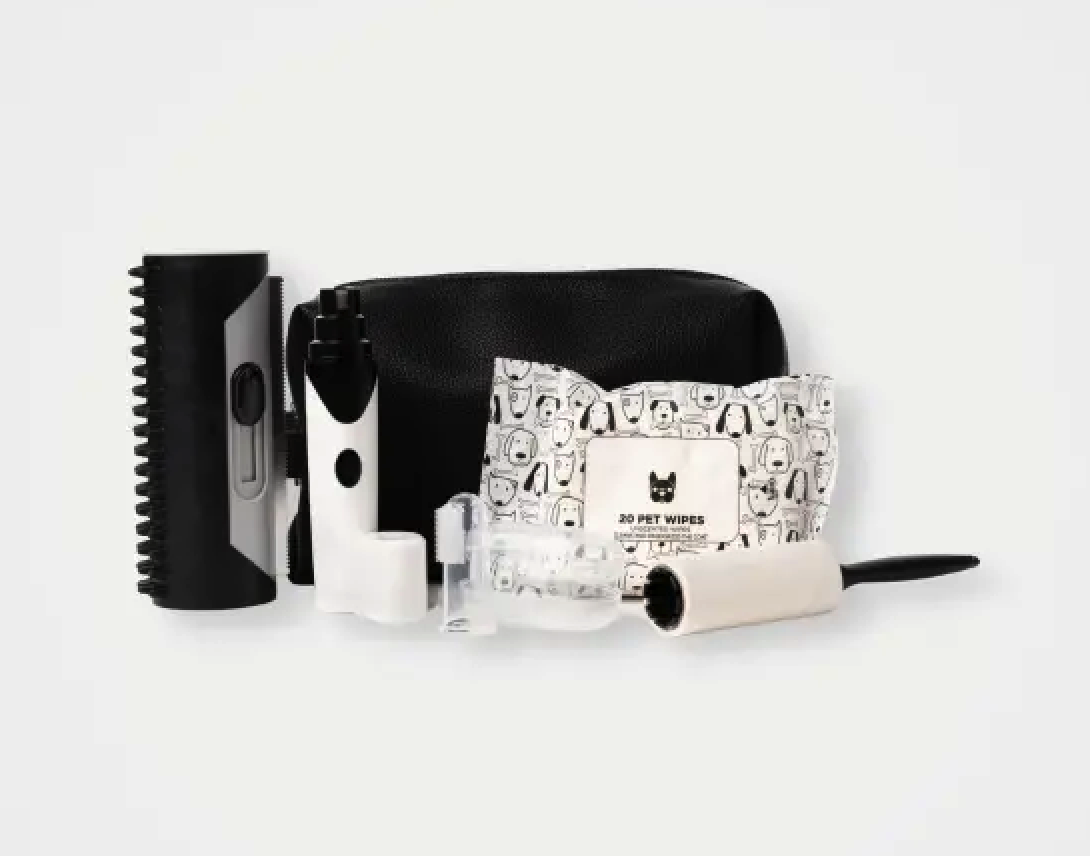
Bringing a new puppy home is an exciting and joyful time filled with play, cuddles, and
exploration. Along with this joy comes the responsibility of teaching the young pup about the
world, including the essential aspect of grooming. Grooming is more than just making your
puppy look good; it is about keeping them healthy, comfortable, and happy.
Introducing a puppy to grooming practices early on is not merely a matter of vanity but a crucial
part of their upbringing that fosters well-being and bonding. However, the process can be
intimidating for both the owner and the puppy, especially if not approached with care and
understanding. This comprehensive guide aims to alleviate those fears and provide actionable
insights to make grooming an enjoyable and nurturing experience.
When to Start Grooming a Puppy:
Deciding when to start grooming your puppy is a vital step in establishing a successful grooming
routine. Although many new owners might feel it is too early to begin, introducing grooming to
a puppy can start as early as 8 to 12 weeks (about 3 months) of age. This early exposure helps
your furry friend become accustomed to the sensations and procedures, making future
grooming sessions less stressful.
While a full grooming session may not be required at this early age, simple activities like gentle
brushing, and touching the paws, ears, and mouth, can lay the groundwork for a positive
grooming experience. Waiting too long to introduce grooming can lead to anxiety and fear,
making it a challenging process down the road. Consult with your veterinarian or professional
groomer to understand your specific breed’s grooming needs and to determine the ideal
starting time.
Choosing the Right Tools and Products:
Choosing the right tools and products is essential in ensuring a positive grooming experience for
your puppy. Since a puppy’s skin and coat are more delicate, using products specifically
designed for them is crucial.
Brushes and Combs: Puppies usually require softer brushes that will not irritate their skin. Look
for brushes with soft bristles and combs with rounded tips to avoid scratching.
Shampoo and Conditioner: Select a puppy-specific shampoo that is gentle and free of harsh
chemicals. A mild conditioner can help in detangling and leaving the coat smooth.
Nail Clippers: Invest in a pair of nail clippers that are designed for dogs, preferably one with a
safety guard to prevent cutting the nails too short.
Ear and Eye Cleaners: These should be specifically formulated for puppies. Using human
products can be harmful.
Towels and Hair Dryers: Soft, absorbent towels and a gentle hair dryer with adjustable
temperature settings can make drying off enjoyable rather than frightening.
Toothbrush and Toothpaste: Start dental care early with puppy-friendly toothpaste and a brush
that fits comfortably in your dog’s mouth.
Creating a Positive Grooming Environment:
Creating a positive grooming environment is paramount in introducing a puppy to grooming.
The first few experiences can shape how your puppy will respond to grooming for the rest of its
life, so it is vital to make it enjoyable and stress-free.
Start slowly and introduce grooming tools and the grooming area gradually. Let your puppy
smell and investigate the tools and reward them with treats and praise for curiosity. Selecting a
quiet, calm area free from distractions, and using a non-slip surface can help your puppy feel
secure. Treats, praise, and gentle petting can reinforce positive associations with grooming, and
it is wise to reward good behavior and patience.
Mixing grooming with play makes the process fun. Brush your puppy for a few minutes and
then play a quick game, for instance. Your demeanor can influence your puppy’s feelings, so
speak in a soothing voice and avoid showing frustration.
Basic Grooming Techniques for Puppies:
Introducing basic grooming techniques to a puppy requires patience, understanding, and the
right approach. Here is a breakdown of some fundamental techniques to consider:
Brushing: Start with a soft-bristle brush that feels gentle on the puppy’s skin. Initially, short
brushing sessions can help the puppy get used to the sensation. Always brush in the direction of
hair growth and gradually increase the brushing duration over time. Regular brushing helps in
removing loose hair and dirt, preventing tangles and mats, and distributing natural oils
throughout the coat.
Bathing: A puppy’s first bath can be a novel experience. Use lukewarm water and a gentle,
puppy-specific shampoo. Test the water temperature with your wrist and use a non-slip mat to
prevent slipping. Keep the bath short and comforting, talking softly, and offering treats as a
positive reinforcement.
Nail Trimming: Puppy nails can be sharp and should be trimmed regularly. Use a puppy nail
trimmer and start by handling the paws frequently without cutting to get the puppy used to the
sensation. When cutting, take off tiny amounts to avoid cutting into the quick, which can be
painful.
Ear Cleaning: Use a gentle, vet-approved ear cleaner. Lift the ear flap and gently clean the
accessible part of the ear with a soft cotton ball. Avoid inserting anything into the ear canal.
Teeth Cleaning: Introduce a puppy toothbrush and toothpaste and make the process fun.
Gentle brushing a few times a week can help in maintaining dental health.
Eye Care: Wipe the corners of the eyes with a soft, moistened cloth, making sure not to touch
the eyeball.
Common Mistakes to Avoid:
When grooming a puppy, it is easy to make mistakes, especially if you are new to the process.
Here are some common mistakes to avoid:
Starting Too Late: Introducing grooming at an incredibly early age helps puppies get used to the
sensations and routine. Waiting too long can make the process more difficult and stressful.
Using Human Products: Human shampoos or brushes might be too harsh for a puppy’s
sensitive skin. Always opt for puppy-specific products.
Rushing the Process: Grooming should be a calm and enjoyable experience. Rushing through it
can create anxiety and fear in your puppy.
Wrapping Up: A Pathway to Bonding and Well-Being
Introducing a puppy to grooming is a crucial step in its development, setting the stage for a
lifetime of health and comfort. Starting early, choosing the right tools, creating a positive
environment, learning basic techniques, and avoiding common mistakes are the keys to a
successful grooming routine.
With patience, consistency, and an understanding of your puppy’s needs, grooming can become
a bonding and enjoyable experience for both of you. It is not just about maintaining
appearance; it is a pathway to ensuring your puppy’s well-being and fostering a loving
relationship.
Customer Support
on our social below
Essentials
Secure Checkout



Pets are more than just animals, they are an integral part of our family. Our mission is to provide pet owners with the highest quality, innovative and sustainable pet products that are designed to promote the health and wellbeing of their furry companions. We believe that pets deserve the best and it is our duty to create products that not only meet but exceed your expectations as a pet owner.
Copyright © 2023 Zoo Crew Shop. All rights reserved.